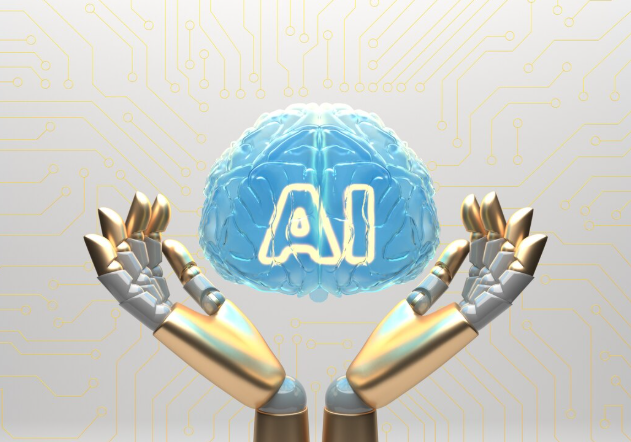
Conceptualizing Your AI Avatar Fitness App
Defining Your Target Audience and Niche
Understanding your target audience is crucial for a successful AI avatar fitness app. Are you focusing on busy professionals needing quick workouts? Perhaps you’re targeting beginners seeking guided exercise routines, or experienced athletes looking for personalized training plans? Consider age demographics, fitness levels, and technological proficiency. “Defining your niche allows you to tailor the app’s features and marketing strategy effectively, maximizing user engagement and retention.” For example, an app for senior citizens would prioritize low-impact exercises and safety features, unlike one designed for competitive weightlifters. Market research, including surveys and competitor analysis, will help you refine your target profile.
Once you’ve identified your ideal user, consider their specific needs and pain points. What are their fitness goals? What are their biggest challenges in achieving those goals? Do they prefer short, intense workouts or longer, less intense sessions? Will they value features like progress tracking, nutrition guidance, or social interaction? “By thoroughly researching your audience and their preferences, you can build an app that directly addresses their needs and provides real value, leading to higher user satisfaction and a stronger market position.” Apps like Peloton have successfully catered to specific niches, demonstrating the power of targeted development. Remember, a well-defined niche ensures your app isn’t a generic fitness tool, but a valuable, personalized solution.
Key Features and Functionality Brainstorming
Begin by defining your app’s core functionality. Will it focus on personalized workout plans, nutrition tracking, or both? Consider including features like progress tracking, allowing users to monitor their achievements. Integrate a social component for motivation and accountability, perhaps through challenges or shared progress updates. Think about the different user needs. For example, will it cater to beginners or advanced athletes? This decision heavily influences the complexity of your AI’s workout generation and dietary recommendations. Remember, a successful AI avatar fitness trainer app needs to be user-friendly and accessible.
Next, brainstorm the specifics of your AI avatar. Will it be customizable in appearance? How will it deliver feedback and motivation? Apps like Nike Training Club and Peloton already offer engaging virtual instructors, showing successful models. Your AI should provide real-time feedback during exercises. This could be through motion tracking or wearable sensor integration. “Consider offering different avatar personalities to appeal to a wider user base.” Finally, thoroughly research existing apps. Identify successful features and functionality to avoid reinventing the wheel, while also focusing on your unique selling proposition. This careful planning will drastically improve your chances of creating a successful AI avatar fitness trainer app.
Choosing Your Monetization Strategy
Monetizing your AI avatar fitness app requires careful planning. Several models exist, each with its pros and cons. Consider a freemium model, offering basic features for free while charging for premium content like advanced workout plans or personalized nutrition guidance. This approach allows user acquisition through a free tier, converting some users into paying subscribers. Another option is a subscription-based model, providing access to all features for a recurring fee. This guarantees a consistent revenue stream but might deter price-sensitive users. Apps like Peloton successfully employ this model.
Think carefully about your target audience. Do they prefer one-time purchases or ongoing subscriptions? “Directly integrating in-app purchases for extra features, such as themed workout programs or new avatar customization options, is another effective strategy.” Remember to clearly communicate the value proposition of each paid feature. Transparency builds trust and encourages users to invest. Finally, explore partnerships with supplement companies or fitness equipment brands for affiliate marketing opportunities. This can provide additional income streams while enriching the overall user experience.
Designing the User Interface (UI) and User Experience (UX)
Creating an Intuitive and Engaging User Interface
A clean, intuitive interface is crucial for user engagement. Think of apps like Peloton or Nike Training Club – their success hinges on simple navigation and visually appealing content. Your AI avatar fitness trainer app should follow suit. Prioritize large, easily tappable buttons. Use clear, concise language for all instructions and feedback. High-quality visuals, including your AI avatar and exercise demonstrations, are essential. Remember to incorporate progress tracking elements prominently. These should be readily accessible and visually engaging, showing users their achievements.
Consider the user journey. How easily can users set up their profiles, select workouts, and track their progress? Intuitive onboarding is key. Minimize steps required for common tasks. For example, the process of choosing a workout should be quick and simple. Features like customizable workout plans, personalized feedback from the AI avatar, and social sharing options will boost engagement. “A well-designed UI enhances the user experience, making the app both effective and enjoyable to use.” Remember to test your design thoroughly with diverse users to ensure inclusivity and accessibility.
Prioritizing User Experience for Seamless Navigation
Seamless navigation is crucial for a successful AI avatar fitness trainer app. Users should effortlessly find workout routines, track progress, and adjust settings. Think of apps like Peloton or Nike Training Club; their intuitive designs keep users engaged. Cluttered interfaces lead to frustration and app abandonment. Prioritize a clean, uncluttered layout with clear visual cues. Large, easily tappable buttons and icons are essential, especially on smaller screens. Consider using a clear color scheme to differentiate sections. This intuitive design enhances user experience and encourages continued use.
A well-designed onboarding process is key. Guide new users through the app’s features. Provide clear instructions and helpful tips. Interactive tutorials can significantly improve comprehension. Remember, first impressions matter. A smooth onboarding experience sets a positive tone, encouraging users to explore the app’s capabilities. “By focusing on intuitive navigation and a streamlined user flow, you drastically improve user retention and satisfaction.” Successful fitness apps leverage this principle to build loyal user bases and positive reviews. Analyze user feedback and iterate based on real-world data to achieve this crucial goal.
Designing for Different Screen Sizes and Devices
Responsiveness is crucial for a successful AI avatar fitness trainer app. Your design must adapt seamlessly to various screen sizes, from small smartphone displays to larger tablets and even desktop computers. Consider using a responsive design framework like Bootstrap or Material Design, which automatically adjust layouts based on screen dimensions. This ensures a consistent and user-friendly experience across all devices. Remember to test thoroughly on different devices and screen resolutions to identify and fix any display issues.
Prioritize intuitive navigation regardless of the device. Large, easily tappable buttons are essential on smaller screens. Avoid excessive scrolling or complex interactions that could frustrate users on mobile. For example, Peloton’s app excels at presenting workout information clearly, regardless of the device. “A well-designed user interface should prioritize clarity and simplicity, making it effortless for users to navigate and interact with the app’s features, regardless of the device they use.” This is especially vital for fitness apps where quick access to information is critical during workouts.
Developing the AI Fitness Trainer’s Functionality
Selecting the Right AI Development Tools and Platforms
Choosing the right tools is crucial for building a successful AI fitness trainer app. Consider platforms like TensorFlow and PyTorch, industry-leading machine learning frameworks offering extensive libraries and community support. These frameworks are vital for creating the core AI algorithms powering your app’s features, such as exercise recognition and personalized workout generation. Remember to factor in scalability; selecting a platform capable of handling increasing data volume and user growth is paramount for long-term success. Cloud-based solutions from providers like Google Cloud, AWS, or Azure offer robust infrastructure and scalability, often integrating seamlessly with chosen ML frameworks.
Beyond the core frameworks, you’ll need additional tools. These include natural language processing (NLP) libraries like SpaCy or NLTK for handling user voice commands and feedback. For the user interface (UI) and user experience (UX), consider cross-platform development frameworks like React Native or Flutter to efficiently create an app accessible across iOS and Android. “The integration of these varied technologies requires careful planning and a skilled development team.” Prioritize tools known for reliability and strong documentation to streamline development and reduce potential roadblocks. Don’t forget to account for potential costs associated with each platform and service.
Developing the AI’s Exercise Recommendations and Personalization Algorithms
Crafting the AI’s exercise recommendations requires a sophisticated approach. We need to leverage machine learning, specifically reinforcement learning or supervised learning models trained on vast datasets of exercise routines, their effectiveness, and user feedback. Consider using a hybrid approach, combining user input with data-driven suggestions for optimal results. “This ensures personalized routines catering to individual fitness levels, goals, and preferences.” Think of integrating APIs from established fitness databases like those offered by ExRx.net to enrich the AI’s knowledge base. Accuracy and safety are paramount; therefore, robust error handling and validation are critical features to include.
Personalization hinges on several factors. The AI should gather user data, such as fitness goals, experience level, dietary restrictions, and available equipment. This data informs the algorithm, dynamically adjusting workout intensity, duration, and types of exercises. The app should continuously track user progress, automatically adjusting the difficulty and variety to maintain engagement and prevent plateaus. “Successful personalization depends on regular feedback loops and adaptive algorithms capable of learning from user interactions and outcomes.” This iterative learning process improves the AI’s ability to generate genuinely effective and personalized fitness plans over time.
Integrating Natural Language Processing (NLP) for Voice Interaction
Voice interaction is crucial for a seamless user experience in an AI fitness trainer app. This requires robust Natural Language Processing (NLP) capabilities. You’ll need to integrate an NLP engine capable of accurately recognizing and interpreting users’ spoken commands, such as “start workout,” “next exercise,” or “increase intensity.” Consider using pre-trained models like those offered by Google Cloud Speech-to-Text or Amazon Transcribe, which provide excellent accuracy and scalability. Remember to account for diverse accents and background noise for optimal performance.
Furthermore, effective NLP goes beyond simple speech recognition. Your AI needs to understand the *intent* behind user requests. This involves using techniques like intent recognition and entity extraction. For instance, if a user says “Do 3 sets of 10 reps of squats,” the NLP system should identify “squats” as the exercise, “3” as the number of sets, and “10” as the number of reps. This nuanced understanding is vital for accurate exercise selection and customization. “A well-trained NLP model significantly enhances user engagement and satisfaction, making your AI avatar feel truly interactive and personalized.”
Building and Testing Your App
Choosing the Right Development Framework and Technologies
Selecting the right framework significantly impacts your AI avatar fitness trainer app’s performance and scalability. Consider cross-platform frameworks like React Native or Flutter, offering efficient development across iOS and Android. These frameworks reduce development time and cost compared to native development. For the AI component, explore established machine learning libraries such as TensorFlow Lite for on-device processing, minimizing latency and maximizing user experience. Remember, choosing a framework that balances your team’s expertise with future scalability is crucial.
The backend infrastructure requires careful consideration. Cloud platforms like AWS, Google Cloud, or Azure provide scalable solutions for handling user data, AI model deployment, and API management. A robust database (e.g., PostgreSQL, MongoDB) is essential for storing user profiles, workout data, and progress. “Prioritize security features to protect user privacy and comply with relevant regulations like GDPR and CCPA.” Remember to thoroughly document your architecture; this simplifies maintenance and future development.
Rigorous Testing and Quality Assurance (QA)
Thorough testing is critical for a successful AI avatar fitness trainer app. This isn’t just about finding bugs; it’s about ensuring a seamless and effective user experience. You’ll need to conduct various tests, including unit testing of individual components, integration testing to verify how different parts work together, and user acceptance testing (UAT) with real users to gather feedback on usability and overall satisfaction. Consider A/B testing different UI/UX elements to optimize engagement. Remember, a poorly tested app can lead to negative reviews and user churn.
“Rigorous quality assurance (QA) is paramount, involving both automated and manual processes.” Automated testing can catch many common issues quickly, but manual testing is crucial for identifying more subtle problems, such as inconsistencies in the AI‘s responses or unexpected behavior in edge cases. Consider employing a diverse group of testers representing your target demographic to ensure inclusivity and accessibility. Regular updates and iterative testing throughout the development lifecycle are essential for continuously improving your app and addressing user feedback effectively. Tools like Firebase Test Lab and Appium can aid in automated testing, significantly enhancing the QA process.
Iterative Development and User Feedback Integration
Agile development methodologies are crucial for building a successful AI avatar fitness trainer app. Start with a Minimum Viable Product (MVP) focusing on core features like workout creation and avatar interaction. This allows for early user testing and rapid iteration based on real-world feedback. Remember, “iterative development isn’t just about adding features; it’s about refining the user experience.” Collect data diligently through surveys, in-app feedback forms, and user interviews. Apps like Fitbod and Peloton demonstrate the importance of continuously adapting to user preferences.
Analyze the feedback meticulously. Prioritize improvements based on user needs and the impact on overall app usability and engagement. For example, if users consistently report difficulty understanding workout instructions, redesign the interface or integrate clearer audio cues. Don’t be afraid to pivot or even discard features if user testing reveals they’re not effective or desirable. “Continuous integration and deployment (CI/CD) pipelines will streamline the update process,” ensuring rapid response to user feedback and providing a more polished and satisfying app experience. Regular updates demonstrate your commitment to improving your AI avatar fitness trainer app.
Deploying and Marketing Your App
Choosing the Right App Stores and Distribution Channels
Strategic app store selection is crucial for your AI avatar fitness trainer app’s success. Prioritize the Apple App Store and Google Play Store, as they command the vast majority of the mobile market share. This ensures maximum reach to your target audience. Consider factors like your app’s features, target demographic, and pricing model when deciding whether additional distribution channels are necessary. For example, an app focused on a niche fitness area might benefit from direct promotion on relevant fitness websites or blogs.
Beyond major app stores, explore other distribution channels carefully. Amazon Appstore and Samsung Galaxy Store offer additional user bases. However, these usually require separate submissions and optimization strategies. “Remember to thoroughly research each platform’s policies and fees before committing to distribution.” Focusing your initial marketing efforts on the Apple App Store and Google Play Store is the most effective strategy for reaching the broadest user base, thereby maximizing your app’s potential for downloads and revenue generation.
Developing a Comprehensive Marketing Strategy
A successful launch requires a robust marketing plan. Consider your target audience: Are they tech-savvy millennials interested in gamified fitness, or busy professionals seeking convenient workouts? Tailor your messaging accordingly. Utilize social media marketing across platforms like Instagram and TikTok, showcasing engaging video content featuring your AI trainer. Partner with fitness influencers for authentic reviews and sponsored posts. This collaborative approach can significantly expand your reach.
Paid advertising campaigns on platforms like Google Ads and Facebook Ads are crucial for driving app downloads. A well-defined app store optimization (ASO) strategy is also essential. Optimize your app title, description, and keywords to improve search rankings. Collect user reviews and respond promptly to feedback – this builds trust and demonstrates your commitment to user experience. “Remember, a strong marketing strategy isn’t just about promoting your app; it’s about building a community around your AI avatar fitness trainer.” Consider offering a free trial period or limited-time discounts to incentivize downloads and engagement.
Utilizing App Store Optimization (ASO) Techniques
App Store Optimization (ASO) is crucial for visibility. A well-optimized listing dramatically increases downloads. Begin by researching relevant keywords like “AI fitness,” “virtual trainer,” and “personalized workout app.” Use these terms naturally within your app’s title, description, and keywords field. Remember, Apple and Google’s algorithms prioritize apps with high keyword relevance. Analyze competitor apps to identify gaps and opportunities. Consider A/B testing different titles and descriptions to optimize your app store listing for conversions.
High-quality screenshots and a compelling video are essential. Showcase your AI avatar’s features and the app’s user interface. “A visually appealing app listing significantly boosts click-through rates.” Gather positive user reviews—they build trust and social proof. Actively respond to both positive and negative feedback. Consider running targeted advertising campaigns within the app stores themselves to reach your ideal user base. Consistent monitoring of your app’s performance and ASO elements is vital for ongoing success. Regularly update your app store listing and address user concerns.
Maintaining and Updating Your App
Regular App Updates and Bug Fixes
Post-launch maintenance is crucial for any successful AI avatar fitness trainer app. This involves consistent monitoring for bugs and promptly addressing user feedback. Tools like Firebase Crashlytics can help identify and prioritize critical issues, ensuring a smooth user experience. Regular updates are vital not only for fixing bugs but also for integrating new features and improving performance. “Ignoring these updates can lead to decreased user engagement and negative reviews, potentially harming your app’s reputation and ranking in app stores.”
Prioritize bug fixes based on severity and user impact. A well-structured bug tracking system, such as Jira or Trello, will streamline this process. Remember to thoroughly test any updates before releasing them to prevent new problems. Consider A/B testing new features to assess their effectiveness and user acceptance. “Proactive updates demonstrate your commitment to providing a high-quality, constantly improving AI fitness experience, fostering user loyalty and positive word-of-mouth marketing.” These updates might include new workout routines, improved AI personalization algorithms, or enhanced user interface elements.
Continuous Improvement Based on User Feedback
Actively soliciting user feedback is crucial for the ongoing success of your AI avatar fitness trainer app. Implement in-app surveys, feedback forms, and rating systems to gather data on user experience. Analyze this data to identify areas needing improvement, such as workout difficulty levels, avatar personality, or the clarity of instructions. Tools like SurveyMonkey or Qualtrics can streamline this process. Remember, consistent feedback loops are vital for app evolution. “Understanding what resonates with your users and what doesn’t is the cornerstone of successful app development.”
Prioritize addressing negative feedback promptly and transparently. Publicly acknowledge issues and demonstrate your commitment to resolving them. This builds user trust and loyalty. Consider A/B testing different features or workout routines based on feedback. For example, if users consistently report difficulty with a particular exercise, revise the instructions or offer alternative options. This iterative process of gathering data, analyzing it, and implementing changes ensures your AI avatar fitness trainer app remains relevant, engaging, and meets the ever-evolving needs of your target audience. Regular updates based on user input are key to long-term app sustainability and positive user reviews.
Staying Ahead of the Curve with New AI and Fitness Technologies
The fitness technology landscape is constantly evolving. New AI models and wearable sensors emerge regularly. To stay competitive, continuous monitoring of these advancements is crucial. Consider integrating features based on emerging research, like advanced biometric analysis for personalized workout recommendations or incorporating virtual reality elements for immersive training experiences. Apps like Peloton have successfully demonstrated the power of integrating diverse technologies to enhance user engagement and satisfaction.
Regular updates are essential, not just for bug fixes but also for feature enhancements driven by technological progress. For example, advancements in natural language processing (NLP) could allow for more natural and intuitive interactions with the AI trainer. Similarly, improved computer vision algorithms could enable more accurate form analysis during workouts. “Failing to adapt to these advancements risks your app becoming obsolete and losing its competitive edge in a rapidly changing market.” Proactive monitoring and timely integration of new technologies are key to maintaining a leading-edge AI avatar fitness trainer app.




